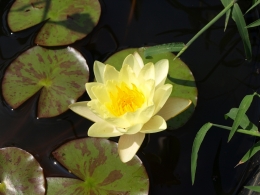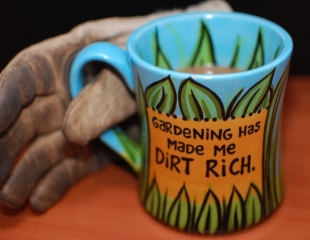Posts Tagged ‘garden projects’
Dirt – A Love Story
It’s everywhere! We scrub it off our hands, our shoes, our personae. We think: clean = good, dirt = bad. Even gardeners succumb to dirt-riddance — we clean our gardens in the spring! But I’m telling you — dirt is your friend, not your enemy.
Here’s why.Get Smart – Eat Dirt!
Dirt harbors essential micro-organisms (like bacteria and fungi). “Yikes!“, you shriek, “That’s a good thing?“. Not just good, essential.
Soil scientists say each gram of soil (less than a teaspoonful) contains over 1,000,000,000 microbes (1 billion!), hosting over 10,000 different species. Here’s what some of these buggers do:
- grow our crops,
- convert wastes into compost,
- deliver vitamins to plants (in the “rhizosphere“),
- kill insects,
- consume toxic waste (like oil spills), and
- create soil in the first place
When soil is first made, for example after a volcano, some nutrients are missing, including nitrogen and carbon. Therefore, the first organisms to colonize the soil are generally nitrogen fixers and photosynthesizers that fix carbon. [DLC-ME]
Furthermore, a study conducted by researchers Dorothy Matthews and Susan Jenks at The Sage Colleges (Troy, NY) suggests that soil-borne germs play a role in reducing anxiety and enhancing learning. The study attracted lots of coverage, like “Can Bacteria Make You Smarter?” (Science Daily) and on Radio Netherlands “The Dirt Show“. Here the two researchers pose with dirt martinis (yuk!).
Anyway, get smart — eat dirt!
Dirt – Accidentally in Love
I began my wholesome relationship with dirt by accident, often the case with true love. I had planned a border along the front driveway and set to work removing a strip of sod about 2 feet wide and 80 feet long. I had loam delivered to create the bed where the sod once was. For expediency, I dumped the torn up sod in a low spot in the backyard; it formed a chunky mound on which I later dumped fall leaves and some additional loam on top to hold it all in place.
I finished the driveway border project, planting daylilies, astilbe and daffodils topped with a layer of bark mulch. Over the next couple of years I expanded the experimental mound in the backyard, adding a curved path with pea stone gravel, throwing in Bleeding Hearts, Oriental lilies, astilbe, a leftover Alberta Spruce, a red twig dogwood, Japanese dwarf spirea, ferns (etc.). What I found was — it didn’t matter what I planted there. Everything flourished. I had accidentally created a rich, organic home for my woodland plants! Dirt won me over and I’m accidentally in love!
I’ve since enlarged the accidental garden with yard clippings, chopped oak leaves, more loam, and barn “soil” from a nearby stable. In the expanded section, I added shrub roses, Columbine, an ornamental Japanese maple, American ginger, epimedium, sweet pepperbush (Clethra) and a stone wall. We’re happy together.
The Joy of Dirt
Back to the driveway border. It perennially struggles — its loamy bed dries out in summer because it doesn’t have enough organic material to store water for long. The day lilies come up OK, but they haven’t prospered; ditto the daffodils. Some day, I will re-visit this project and give it the tender lovin’ dirt it needs.
I’ve started another mound in the front yard: lawn clippings, chopped leaves, compost from the Marshfield transfer station (aka, the dump), and a decorative covering of bark mulch. It’s January and the mound is slumbering beneath a foot of snow, while microorganisms and worms are busily feeding and creating new dirt. Oh, joy!
Now it’s your turn — Share the dirt!
18 Steps to a mirror in the garden
Hyperfocusing, or My Aching Back
 Gardening "In the Zone". Hyperfocus is great for accomplishing tasks while displacing the cares of the world. I end up with pride of accomplishment and a self-induced worry-free reverie. But when the sun sets and I exit "the zone" I suddenly notice my aching back. Read the rest of this entry »
Gardening "In the Zone". Hyperfocus is great for accomplishing tasks while displacing the cares of the world. I end up with pride of accomplishment and a self-induced worry-free reverie. But when the sun sets and I exit "the zone" I suddenly notice my aching back. Read the rest of this entry »

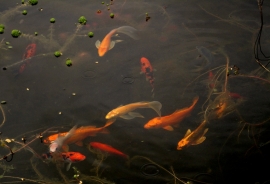
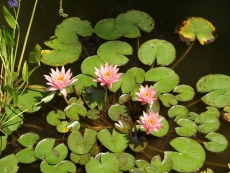
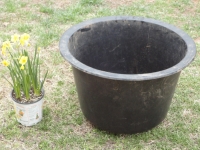
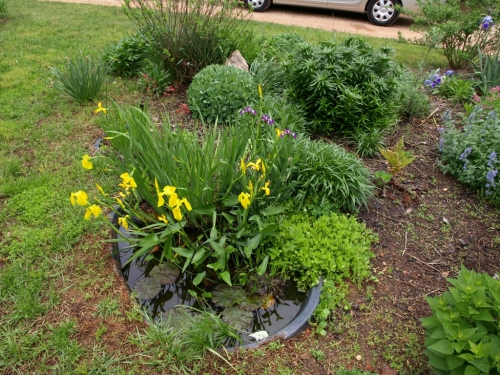
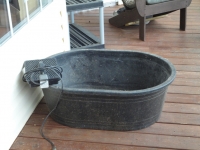
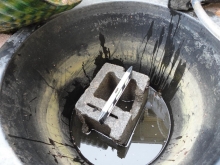
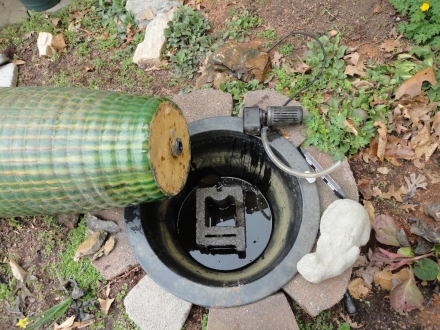
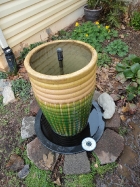 Level the pot for the best overflow
Level the pot for the best overflow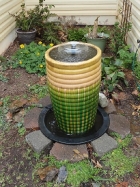 Fountain in action
Fountain in action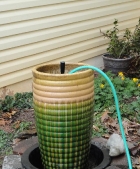 Fill the pot and basin with water
Fill the pot and basin with water